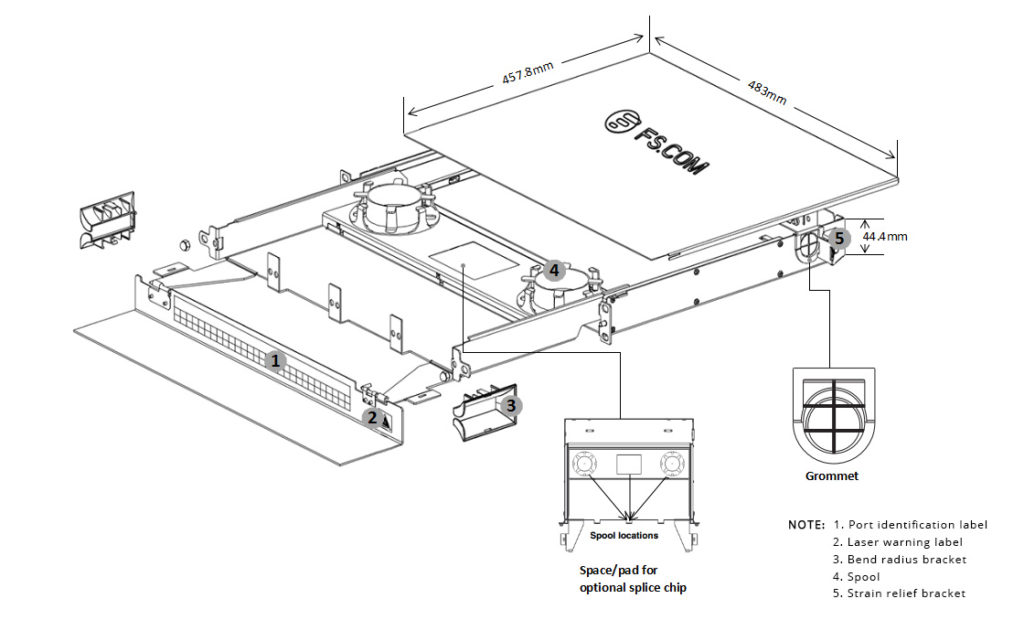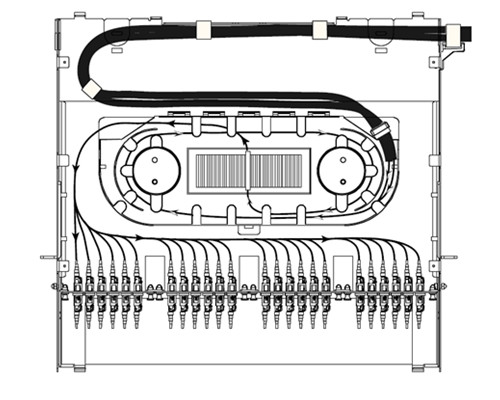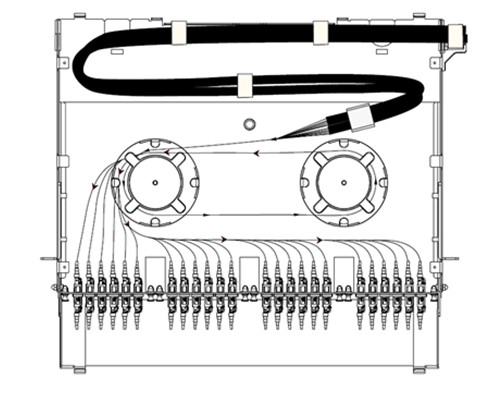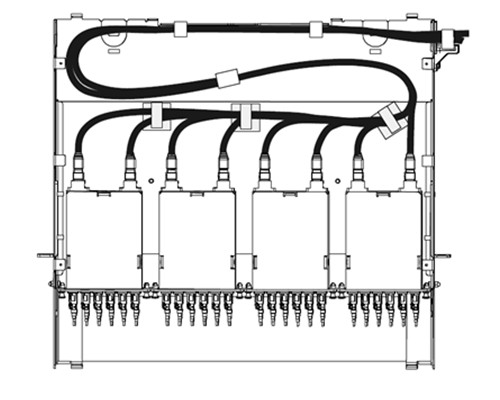Effective network monitoring is necessary for a most fiber optic network in today’s telecommunication networks. There are two questions should be considered for fiber optic network monitoring. One is whether the whole signal traffic can be effectively monitored without missing any information, the other one is the transmission quality and the fiber network should not be disturbed. TAP (traffic access point) is usually added to the network for network monitoring. To meet the need of effective real-time monitoring, high performance network and high density cabling, an advanced passive device is commonly used, which is known as tap cassette, or optical tap cassette, or fiber tap.
The optical tap patch cassettes provided in the market usually use LGX cassette designs. The outside look of an LGX optical tap cassette is just like an MTP LGX cassettes. However, the inner design of tap patch cassette is different. The design of tap patch cassette is easy to understand by its function—making a 100% copy of network data without affecting transmission. Thus there is a port for connecting the monitor device and port for transmission.
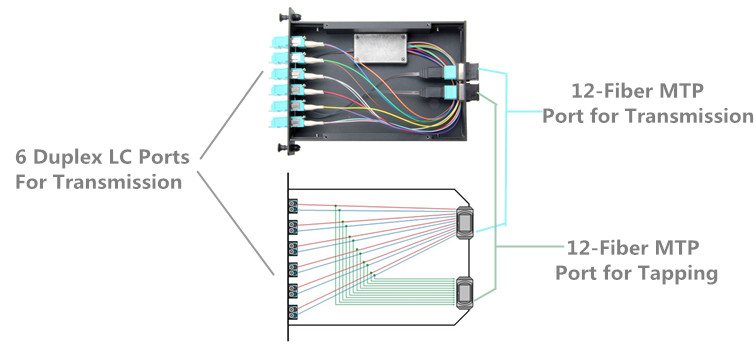
The above picture shows the inner structure of a 2-MTP to 6-LC 40G fiber tap. On the front panel of the fiber tap cassette, there are 6 duplex LC ports for dual-way data transmission. The network traffic is split off for monitoring and analysis in a specific split ratio by a fiber splitter. Thus, On the rear panel, there are two 12-fiber MTP ports, one for data transmission and the other is used to link with monitoring devices. This simply explained how the passive tap patch cassette is being used for monitoring without disturbing the network traffic. In addition, this type of fiber patch cassette can be directly installed in the standard unit rack which has low space requirement and can meet the demands of high density cabling.
Optical tap cassette can be divided into various type according to fiber type, data rate, port type and the above mentioned split ratios. The functions of the fiber taps provided in the market are nearly the same. But how to judge which one is best for your applications? The above-mentioned factors can help you make the decision.
Split Ratios of Tap Patch Cassette
What is the split ratios of fiber optic cassette? as the mentioned, the optical data are split off into two parts in a specific split ratio for transmission and tapping/monitoring. Which means there will be a light loss if using a tap patch cassette. For instance, if an optical tap cassette has a split ratio of 70:30, the 70% power light will be used for transmission and the 30% part will be used for monitoring (shown in the following picture). In simple, the fiber tap split ratios are the percentage of light left in the transmission link versus the percentage that is used for monitoring.
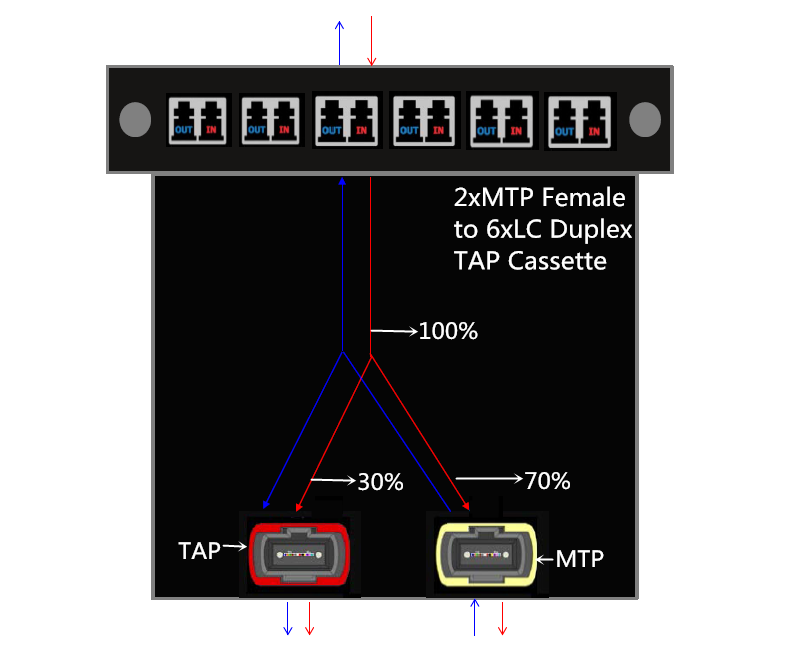
As there is a light loss if using a tap patch cassette, the installers should first considerate split ratio of the tap cassette during selection. The transmission distance and light source should also be considered to determine the split ratio of the fiber tap cassette. The split ratios of the optical tap cassettes usually range from 50:50 to 95:5, among which optical tap cassettes with a split ratio of 50:50, 60:40 and 70:30 are the most commonly used.
Fiber Type, Data Rate and Connector of Tap Cassettes
Except for the split ratio, fiber type, data rate and connector type should also be considered according to the specific application. There are 40G fiber tap and 100G fiber tap which utilizing MTP port and LC port. Tap patch cassettes with multimode fiber and single-mode fiber are all available.
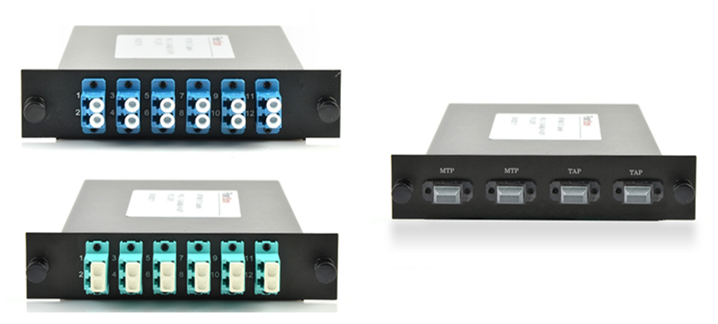
Adding an optical tap cassette is very easy. Here takes the example of 40G optical tap cassette (2xMTP to 6xLC Duplex) during application (shown in the following picture). Usually, an MTP to 6 duplex LC fanout fiber cable is being used to connect the optical tap cassette to the monitor devices. These fiber tap cassettes are usually deployed between the fiber link and can be used stand alone or deployed in fiber optic enclosure for better cable management.
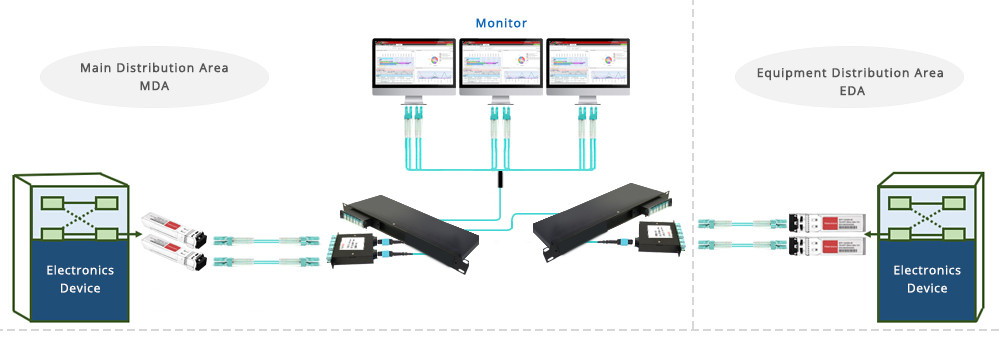
Tap patch cassette is a low-cost and easy-to-use passive device which can support real-time monitoring of the network with great accuracy. Kindly Contact fs@sales.com for or visit TAP LGX CASSETTE more details about fiber tap cassettes.

